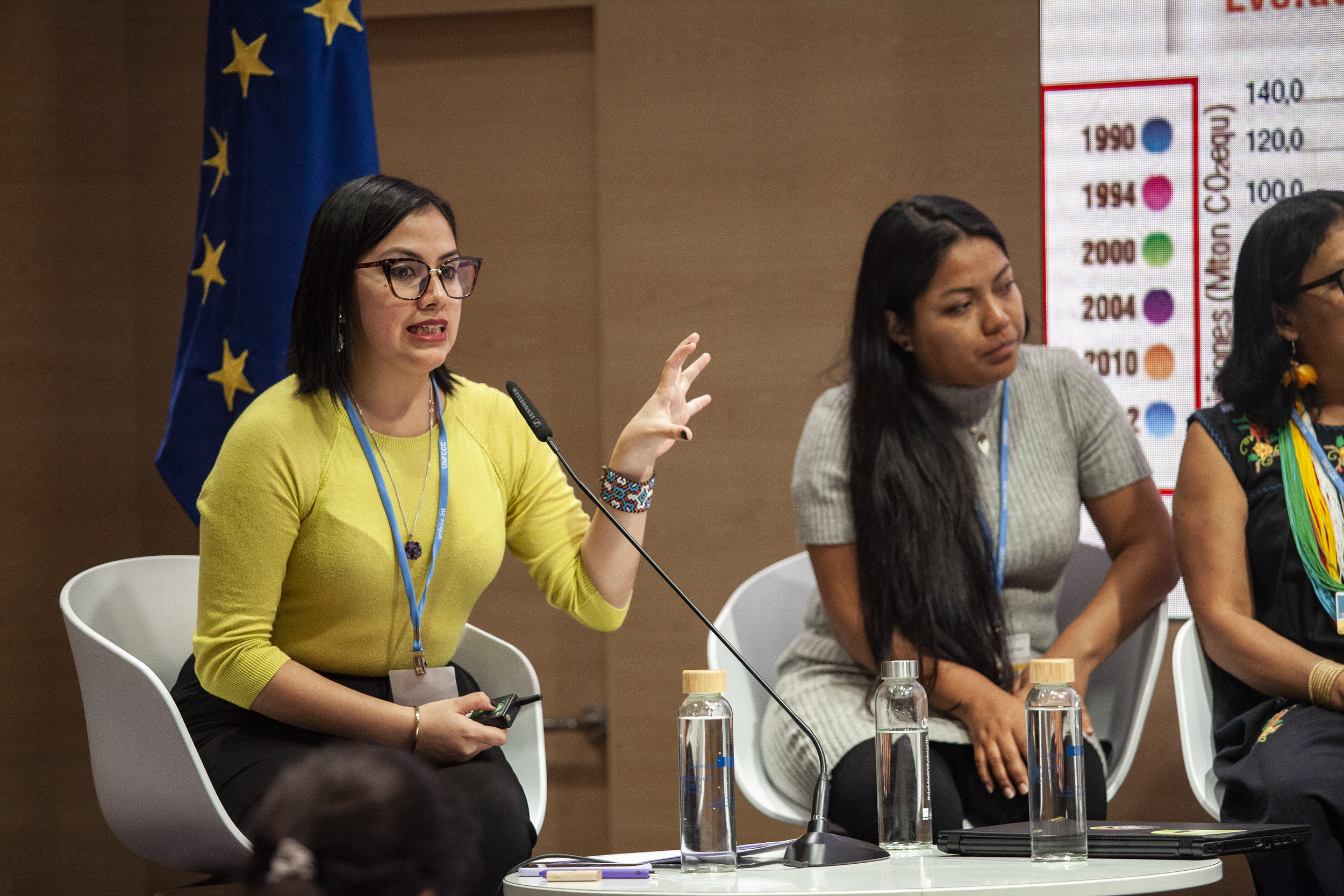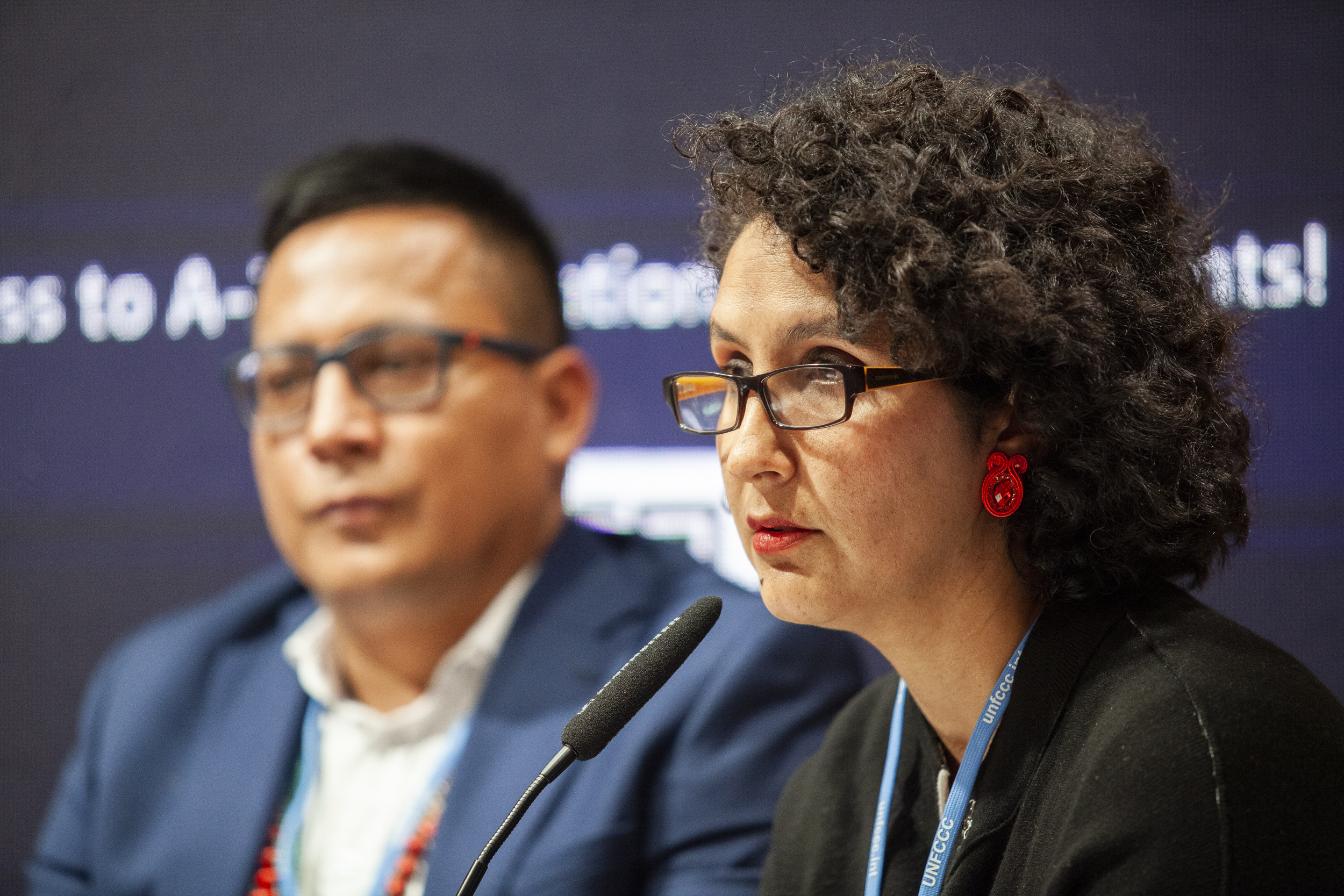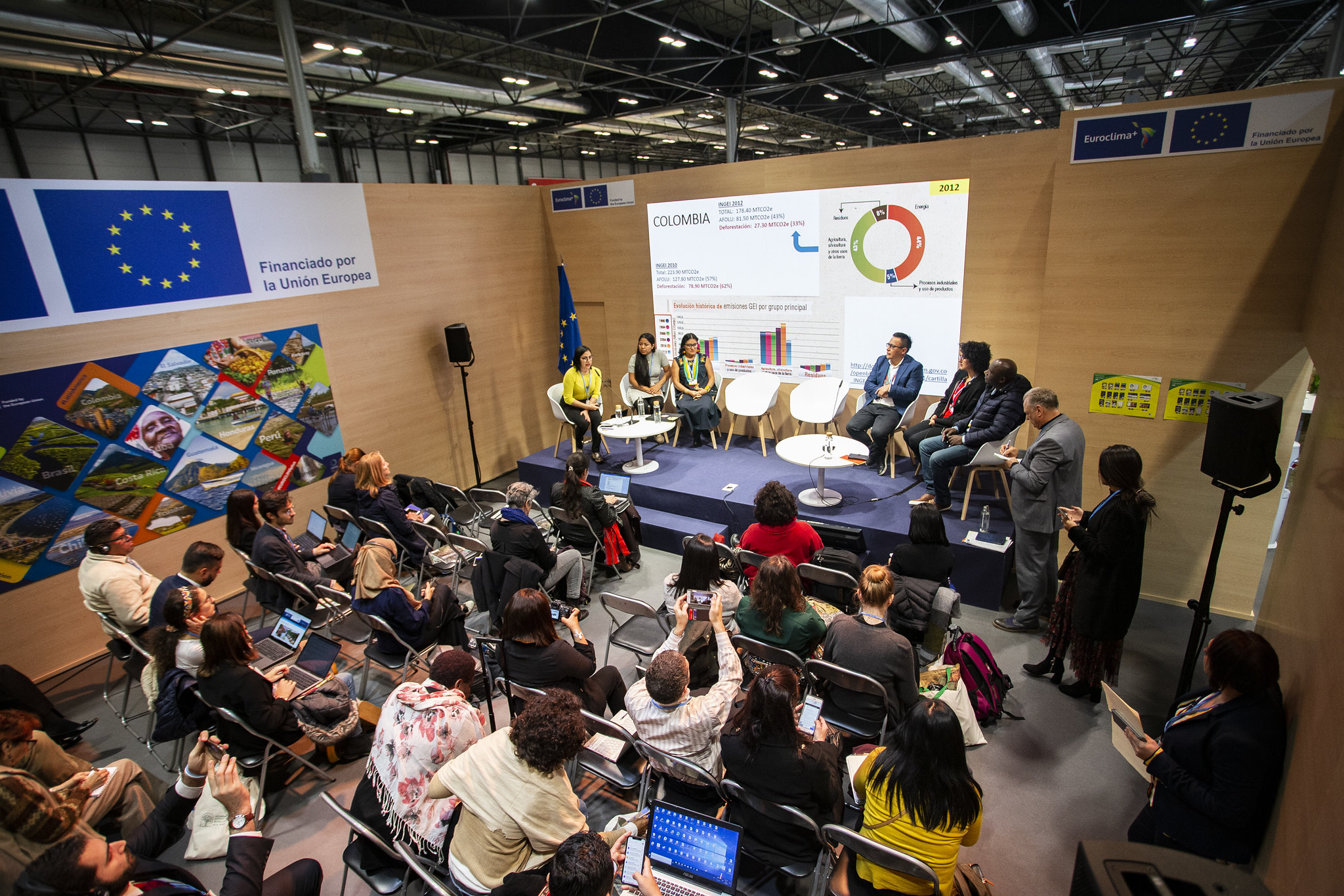During COP25, the Peruvian forestry authority reported that the construction of this new mitigation measure is key to meeting the country’s climate commitment goal.
In South America Forest fires and growing deforestation due to intensive agriculture, livestock and illegal activities are devastating tropical forests, this situation puts the Amazon at risk. What is Peru doing to address this problem?
During her participation on the first day of COP 25, Madrid, Rocío Vásquez, specialist in Climate Change and Forests at DAR (Environment and Natural Resource Rights) , said that both in Peru and in Brazil and Colombia, the main source of emissions is due to deforestation.

Foto: Rocio Vasquez/DAR. Crédito: EuroclimaPlus
“In Peru, 51% of the GHG (greenhouse gas) emissions that are emitted come from the Land Use Change sector, and that 92% of this is due to deforestation; in Colombia, deforestation represents 33% of the country’s emissions, according to its latest National GHG Inventory; Meanwhile, Brazil is the nation with the highest emissions in the region, whose main responsibility is the change in land use, energy and agriculture. All official data from each government”, she reported.

Foto: Lorena Durand / SERFOR (Perú). Crédito: EuroclimaPlus
New mitigation measure
Lorena Durand, representative for SERFOR (peruvian national forest authority) said that Peru has already identified its measures to operationalize the country’s climate commitments, of which eight mitigation measures have been proposed for the sector that generates the largest amount of emissions in the country. Likewise, as part of its commitment to safeguard forests, SERFOR with the support of civil society has been developing a ninth measure aimed at improving the management of road infrastructure to prevent deforestation in the Amazon.
“We are currently working on developing a ninth mitigation measure related to infrastructure. We have been working with the Ministry of Transportation and Communications (MTC), regional governments, civil society and indigenous peoples. In this way we seek to make the infrastructure sustainable,”, said Durand.
It should be noted that this new mitigation measure is key to meet the country’s climate goal, which seeks to reduce emissions by 2030. Likewise, this new measure that drives SERFOR, with support from DAR, proposes to improve the management of roads to reduce direct and indirect impacts on forests.
These statements were given by the Peruvian representatives who participated in the side event “A multi-stakeholder look to increase the ambition of Nationally Determined Contributions (NDC) from the tropical forests of Brazil, Colombia, Peru and Mexico” co-organized by Environment and Society Association (AAS by its acronym in Spanish), Environment and Natural Resource Rights (DAR by its acronym in Spanish) and Rede de Cooperação Amazônica (RCA).
José Luis Rengifo, representative of the Black People – Process of Black Communities of Colombia also participated in the event; Valéria Paye, of the Coordination of the Indigenous Organizations of the Brazilian Amazon (COIAB); Robinson López, representative of the Coordinator of the Indigenous Organizations of the Amazon Basin (COICA) and Mayra Rojas, of the Mexican Network of Peasant Forest Organizations, who stated concern about monocultures and illegal activities (mining and logging) that cause deforestation in their territories and impacts on the rights of indigenous peoples and local communities.
See video of this side event here


